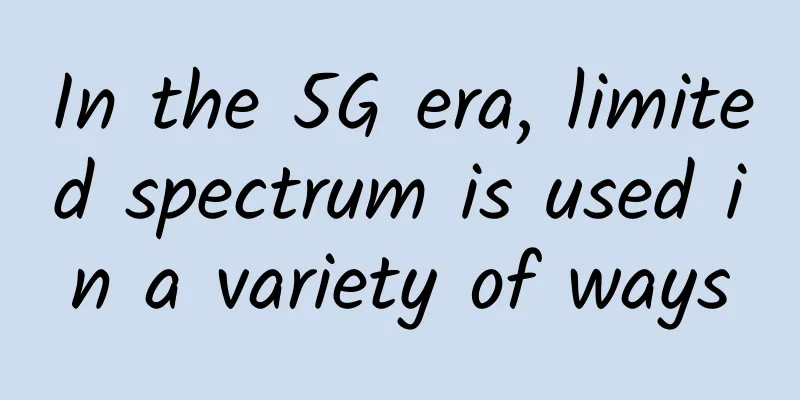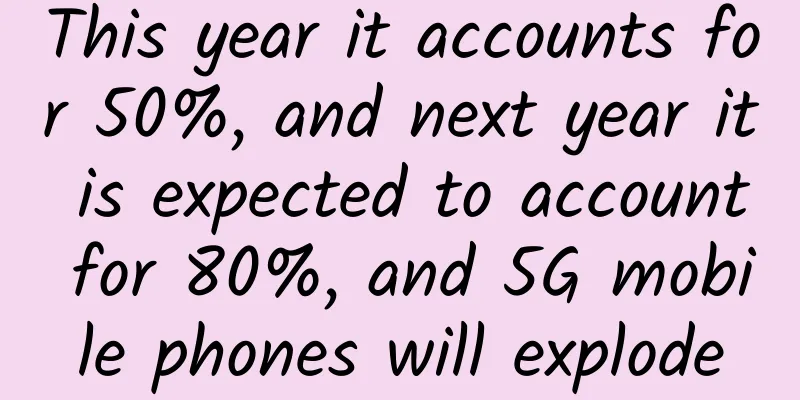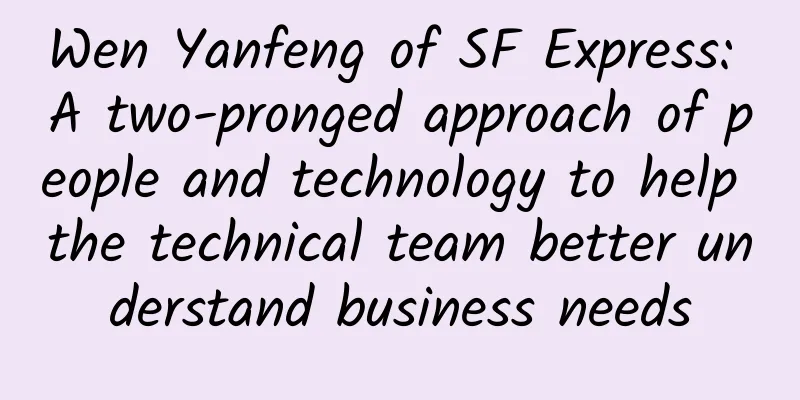In the 5G era, limited spectrum is used in a variety of ways

|
A spectrum comparable to gold Wireless spectrum is the lifeblood of mobile networks and the most valuable resource for operators. If wireless networks are compared to information highways, wireless spectrum is the land on which these highways are built, which is rare and expensive.
When we pick up our mobile phones to surf the Internet, all kinds of data must be carried on electromagnetic waves of a specific frequency and sent to the mobile phone through base stations. One characteristic of electromagnetic waves is that they are afraid of interference, so each country has strict management of the use of spectrum, authorizing through auction or allocation to ensure that a spectrum can only be used exclusively by one operator. Before 5G, the spectrum range most commonly used for wireless communications was 300-3000MHz, and different frequencies have different propagation characteristics. The lower the frequency band, the longer the wavelength, the stronger the diffraction ability, and the smaller the penetration loss; the higher the frequency band, the shorter the wavelength, the weaker the diffraction ability, and the larger the penetration loss. It can be seen that low frequency bands are more suitable for wireless network coverage. Therefore, spectrums below 1 GHz such as 700 MHz or 900 MHz are often called "golden frequency bands". The available spectrums in these low frequency bands usually only have a bandwidth of tens of megabytes, which shows their scarcity. With the development of mobile communications, the limited bandwidth of low-frequency bands cannot meet the needs of use. The larger bandwidth of higher-frequency spectrum means that wider roads can be built, thus transmitting data faster. Therefore, the development from 2G to 4G is a process of continuously developing new spectrum from low to high. 2G started from 900MHz, and by 4G, it has been developed to 2600MHz. In order to have enough bandwidth to provide ultra-high download speeds, 5G has to develop higher frequency bands, such as the mainstream Sub6G 3.5GHz, 4.9GHz, etc., and even use millimeter waves (mmWave), which have large propagation losses and are difficult to penetrate even in heavy rain and large trees. In order to occupy the high ground of speed in the 5G era, major operators around the world have spent a lot of money in spectrum auctions. It seems generous, but in fact there is really no other way. Even though the spectrum is expensive, they have to bite the bullet and buy it. Otherwise, it will be difficult to develop 5G business in the future and they will fall into a more passive position. In Italy's 5G spectrum auction last year, multinational communications giant Vodafone spent a total of 2.4 billion euros, of which 80M bandwidth on 3.5GHz cost nearly 1.7 billion euros, and 10M bandwidth on 700MHz cost nearly 700 million euros. Having the spectrum is equivalent to just buying a ticket to 5G. The subsequent base station procurement, engineering construction, and network operation and maintenance are also big holes to be filled. The initial investment for operators who want to make some money from 5G is really not small. Therefore, maximizing the use of spectrum, continuously improving spectrum efficiency, and squeezing the value of the spectrum purchased at a high price to the extreme has become the industry's unremitting pursuit. The problem of spectrum refarming between multiple modes The continuous expansion of new spectrum from 2G to 5G is equivalent to continuously building wider roads. Although this simple and crude one-size-fits-all approach is convenient and fast and has no historical baggage, it also has obvious shortcomings. As the frequency increases, the coverage of the new frequency band becomes weaker and weaker, and more sites need to be built to achieve continuous coverage. If a large number of 5G sites are built with great effort, but the 5G logo on the mobile phone is sometimes displayed, the operators will be dissatisfied, and the users will be even more dissatisfied. Therefore, how to deploy 5G carriers on lower frequency bands already occupied by 2G/3G/4G to improve 5G's basic coverage has become an urgent problem for operators to solve. The most direct solution is spectrum refarming. That is, a piece of spectrum in the lower frequency band originally occupied by 2G, 3G or 4G is directly cut off to be used for 5G, and then carrier aggregation is performed with the newly deployed 5G spectrum to take into account both capacity and coverage. Is this feasible? In fact, this is also problematic. First, although the number of 2G and 3G users is decreasing and their value is decreasing, they will still exist for a long time and it is impossible to shut them out. Therefore, 2G and 3G must occupy a certain spectrum to provide thin network coverage. Furthermore, the number of 4G users is booming. According to estimates by the well-known consulting firm GlobalData, about 86% of traffic is currently carried on 4G, which is a money-making machine for operators. Currently, users are complaining about 4G network congestion and slower and slower speeds. If part of the 4G spectrum is cut off for the yet-to-be-developed 5G and they have to watch the loss of 4G traffic, it will undoubtedly be a loss. Finally, 5G is just beginning to develop, with a small number of users and idle networks, but its publicity is huge. At this time, the original intention of deploying low-frequency 5G is to provide continuous coverage, but the download rate that the low-frequency band can support is relatively limited, and it is inappropriate to let 5G occupy a large amount of 4G spectrum. Operators are faced with the situation that 2G/3G spectrum must be retained, 4G spectrum as the main data service is in short supply, and 5G coverage is still in a stalemate. A good cook cannot cook without rice. What can they do? Groundbreaking Innovation: Dynamic Spectrum Sharing In fact, major communication equipment manufacturers have been actively exploring spectrum sharing technologies between wireless access networks of various standards in the 4G era, and have achieved fruitful results. Huawei's Cloud Air and ZTE's Magic Radio Pro solutions are both leaders among them. They can centrally manage limited spectrum, intelligently schedule it, and dynamically share it among different technologies such as 2G, 3G, 4G, and NB-IoT, truly making the best use of it. As shown in the figure below, these dynamic spectrum sharing technologies between different standards provide a high-performance 2/3G base network while using as much spectrum as possible on the more efficient 4G at all times. Among 2G, 3G, and NB-IoT, 3G occupies the largest bandwidth, has the greatest potential to compress bandwidth, and share spectrum with 4G and even 5G. Although the standard 3G carrier requires 5M bandwidth, in fact, in scenarios where the traffic volume is small and the rate loss can be tolerated appropriately, it can be compressed to 3.8M or even 2.6M and it will work. In this way, the spectrum occupied by 3G can be expanded and contracted as needed and dynamically shared with 4G. In other words, 1.2M to 2.4M bandwidth can be squeezed out of the 3G carrier for 4G. This bandwidth may not seem like much, but the spectrum efficiency of using this resource for 4G is higher than that for 3G, and it can bring a lot of gains in the low-frequency spectrum where the spectrum is particularly scarce. In the 5G era, the protocol defines dynamic spectrum sharing (DSS) technology, which allows 4G and 5G to share the same spectrum in real time at the millisecond level. If there is more demand for 4G, more spectrum will be allocated to 4G; if 5G traffic increases, more spectrum will be allocated to 5G. It is completely scheduled on demand to prevent idle spectrum. However, the standard DSS only considers spectrum sharing between 4G and 5G. In fact, in addition to 4G, there are usually 2G or 3G in the lower frequency bands, which requires the technology to be enhanced and expanded from 4G/5G dual-mode to multi-mode, so that it can dynamically share spectrum between 3G, 4G and 5G. To address the shortcomings of standard DSS technology, ZTE took the lead in enhancing and innovating the Magic Radio Pro solution package, combining mature 2G/3G/4G spectrum sharing technology with 4G/5G DSS technology, and proposed the SuperDSS solution, especially dynamic spectrum sharing among 3G/4G/5G standards at 2100MHz. Each standard occupies resources on demand, which can solve the pain points of retaining basic services of 2/3G users while maximizing 5G experience. Then, Huawei also announced the expansion of the original CloudAir solution package, introducing three-mode coexistence scenarios including 5G, and supporting dynamic sharing of three standards. Taking 20M bandwidth as an example, if traditional DSS is used, 4G and 5G can only be configured to dynamically share 15M bandwidth, and the remaining 5M is left for 3G to use statically; after using SuperDSS, 3G, 4G and 5G can dynamically share spectrum within the entire 20M bandwidth, thereby improving spectrum utilization. Recently, Henan Unicom has taken the lead in completing the commercial verification of the world's first SuperDSS solution in Anyang City. By carrying out real-time dynamic sharing of 3G/4G/5G modes on the 2100MHz spectrum, it prioritizes 5G user experience while taking into account 3G and 4G users. Compared with static spectrum allocation, the total data throughput has increased by 35%. Why can Super DSS achieve such high gains so quickly? Its technologies such as intelligent spectrum sharing algorithm, RRU filter optimization, and anti-interference algorithm have been tested by the market. On this basis, it is natural to push the technology towards 5G applications. In the 5G era, multiple features such as high speed, large connections, and high reliability have led to the prosperity of artificial intelligence (AI). 5G+AI is the general trend, and using AI to carry out intelligent spectrum sharing is the trend of the times. Wireless spectrum, a scarce and valuable resource, has been transformed through joint innovation in the industry from simple and crude static allocation to real-time dynamic sharing among multiple modes, which has continuously improved spectrum efficiency and brought greater value to limited resources. |
>>: Big data and 5G: Where does this intersection lead?
Recommend
5G+Wi-Fi 6 accelerates the Internet of Everything
According to CAICT's forecast, by 2025, 5G wi...
F5 Launches NGINX for Microsoft Azure, Delivering Secure, High-Performance Applications to the Azure Ecosystem
F5 recently announced the launch of F5 NGINX for ...
This year's Internet Light Expo has upgraded its black technology: these new gadgets are quite cool
On November 6, the 5th World Internet Conference ...
80VPS: Hong Kong server free upgrade 100M bandwidth from 450 yuan/month, US CN2 server from 350 yuan/month
80VPS, a long-established Chinese hosting company...
IT teams abandon DIY SD-WAN for managed hybrid models
When software-defined WAN first emerged, demand f...
Maxthon Hosting: 600 yuan/month Hong Kong Dedicated Server-E5-2630v2/16GB/480G SSD/2IP/CN2 GIA Line
The tribe has shared information about Aoyo Zhuji...
[11.11] Justhost offers a 30% discount for a limited time, with 22 data centers available in Russia, the United States, Singapore, etc.
Justhost.ru has released a limited-time discount ...
I heard that the client will disappear within three years.
[[400044]] This article is reprinted from the WeC...
Is “localization” so complicated?! In 2018, Inspur and Cisco Networks continue to demonstrate China’s strength
[51CTO.com original article] In 2017, the names o...
China Unicom's mixed ownership reform is the trigger for the restructuring of the telecommunications industry order
How will China Mobile and China Telecom respond t...
PQHosting Summer Promotion 15% off, 33 data centers 1Gbps unlimited traffic VPS monthly payment from 4.77 euros
PQ HOSTING released an email about summer promoti...
China's 5G connections have reached nearly 430 million, accelerating the exploration of vertical application markets
By the end of 2021, nearly 8% of the world's ...
These seven points of network technology, weak current people must know
Weak current people have one thing in common: mos...
What are the risks encountered when migrating a data center and how to deal with them?
When an enterprise develops to a certain extent, ...
5G is not yet popular, but 6G patents are already the world's first, and the 6G war has already begun
5G has been promoted for a long time, but it has ...









